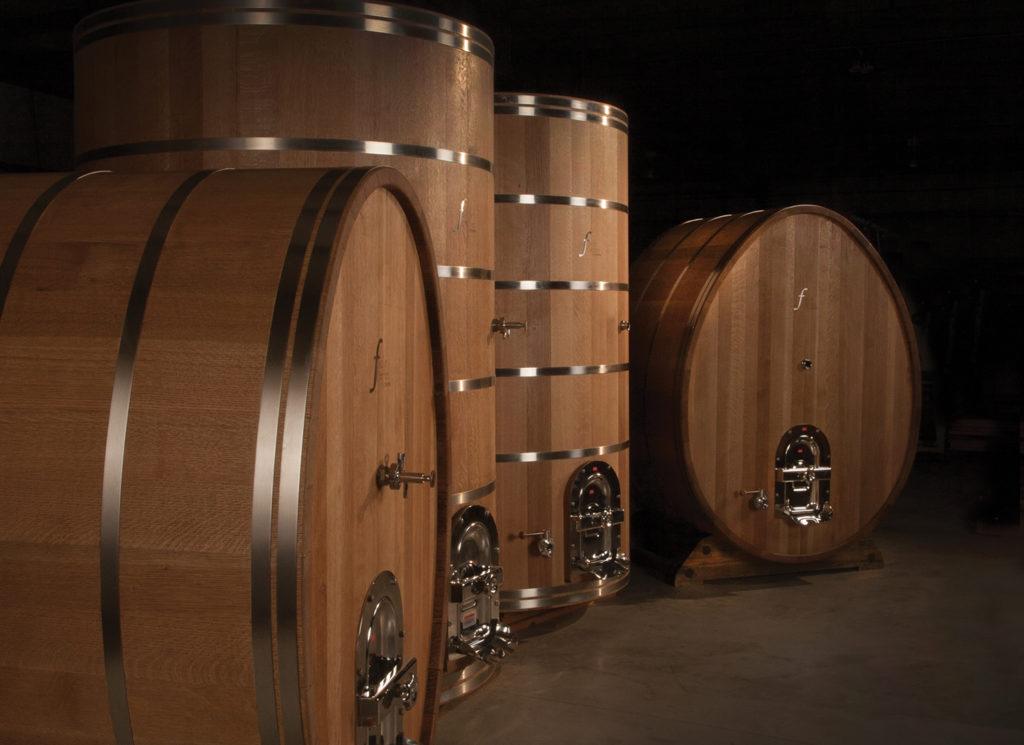If you are a casual fan of craft beer, you might be surprised to hear that many of the world’s top-rated beers are aged in wooden barrels. The beer industry largely phased out the use of wooden barrels in the early twentieth century with the advent of metal kegs, which could be more easily sanitized. Today barrels are more associated with wine, spirits, or even sake (which has also largely moved away from its wooden ‘roots’) than beer.

But barrel-aging has become hugely popular in the craft world. In fact, as of December 2017, three of the top five—and five of the top ten—on BeerAdvocate.com are bourbon-barrel-aged imperial stouts. Why has this technique become so popular?
It is largely the same reason that wine, whiskey, rums and tequilas are aged in (primarily oak) barrels. Wood-aging infuses beer with a variety of compounds that add complexity to its flavor and mouthfeel. The nature and intensity of these compounds depend on a variety of factors, including the type of wood, its freshness, the size of the barrel, the length of contact and whether the wood was charred. For example, fresh oak can provide a spicy character and pronounced tannins whereas charred oak can provide a more vanilla—or coconut-like—character and more subtle tannins.
A number of finished beers are being aged in barrels freshly emptied of spirits. These are typically strong beers with a solid malt presence, as the flavors and body of these beers will stand up better to the intense flavors of the spirits’ barrels.
The most popular style of these beers is the bourbon-barrel-aged imperial stout, as the sweetness, spice, coconut, and vanilla character imparted by a bourbon barrel perfectly complements the roasted malt (coffee, dark chocolate) and fruity esters of the imperial stout. Even as the beers that pioneered the style like Goose Island Beer Company’s Bourbon County Brand Stout (14.1%, first brewed in 1992) and Founders Brewing Company’s Kentucky Breakfast Stout (11.8%, first brewed in 2003) are scaled up to international distribution, their winter release dates remain anticipated events on craft beer fan’s calendars.
While barrels that contained spirits will be fairly sterile, others will include microbes like bacteria or yeast. This is important for producing sour and funky beers inspired by those of Belgium (previously discussed in Beer Buzz, Summer 2015) as well as traditional British old ales, Baltic porters and other stock (aged) beers to which wild yeast contributes notes of earth and leather.
One way North American brewers work with wood is by investing in large oak fermenters called foeders that were highly uncommon just a few years ago. While fresh yeast cultures are generally still added to each batch, the wood in these vessels will harbor souring bacteria and wild yeasts that will give each brewer’s beer the flavor of its “house culture.”
Some breweries in wine-making regions are either fermenting or aging their beers in barrels previously used for wine fermentation. This technique was pioneered about twenty years ago by Vinny Cilurzo of Russian River Brewing Company in Santa Rosa, California, in beers like Consecration (10%), a red ale aged in cabernet barrels with currants and Supplication (7%), a sour brown ale aged in pinot noir barrels with cherries. Some brewers are even racking fresh beer onto the leftover pomace (grape skins and pulp) in barrels after the wine has been bottled, which provides a variety of wild yeasts as well as ample vinous character.
So far, barrel-aged beer remains fairly uncommon in Japan’s craft beer scene, although whiskey and sake barrels have been used to good effect by some local breweries. Kiuchi Brewing Company was one of the first brewers in Japan to work with wood, aging its Hitachino Nest Japanese Classic Ale (7%) on Japanese cedar casks as a tribute to the sake industry and its Extra High (XH, 8%) in barrels. Let’s hope for more innovative uses of wood-aging in Japan, more collaborations between Japanese breweries and distilleries, and more importation of examples of these styles!




